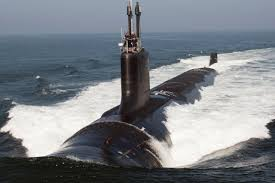- Joined
- Aug 25, 2021
- Messages
- 11,532
- Reaction score
- 28,253

(1) What is the southernmost point of mainland South America called?
(2) What is the southernmost point of mainland Africa called?
(3) What is the northernmost point of mainland Europe?
(4) Where are the highest tides in the World?
(5) What are the nautical terms for left and right? (Two Marks)
(6) Who traditionally sails before the mast, who in the middle, and who after the mast? (Three Marks)
(7) How long is there between two high tides?
(8) What is the main reason tidal range changes from time to time, in the same place? What are the highest and lowest tides called? (Three Marks)
(9) Can you name the following classes of nautical ropes? (Four Marks) (A) Rope attached to the bow of a boat (B) Rope used to hoist or lower something (C) Rope used to trim sails (D) Ropes that hold masts vertical from the side (Four Marks)
(10) What are the names of: (A) The control by which a ship is (generally) steered? (B) The thing that turns the ship (controlled by (A))? (C) The bottom-most part of a ship, which helps with its balance, and keeping it moving forward rather than sideways? (Three Marks)
(11) What is attached to the Plimsoll Line on a ship?
(1) Cape Froward (Chile) (Half a mark for Cape Horn, which is on an island)
(2) Cape Agulhas (South Africa) (Half a mark for The Cape of Good Hope)
(3) Cape Nordkinn (Norway)
(4) The Bay of Fundy (Canada): ~52 feet (Half a mark for 'Canada')
(5) Port and Starboard (Half marks if you got them the wrong way around)
(6) Sailors before the mast, marines in between (to put down mutinies), and officers after the mast
(7) Typically ~12:25 (Half a mark for 12 hours, and you can have a mark for 'slightly over 12 hours'). Because of the geometric complexities of the movements of the Sun, Earth and Moon, and the effects of local terrain, season and weather, tide behaviour is quite complex in detail. Some places do not have the usual 12:25 pattern.
(8) The gravity of the Sun and Moon. When they align their pulls they produce an extra-high Spring Tide, and when their pulls are perpendicular there is an extra-low Neap Tide.
(9) Painter, Halyard, Sheet, Shroud
(10) Helm, Rudder, Keel
(11) Nothing really, not even a shoe, as this is a trick question. Originally there was only one Plimsoll Line, but now there are many, for saltwater, freshwater, summer, winter, timber loads etc. They are lines painted on the outside of a ship's hull, showing the line higher than which the water must not go (or the vessel would be overloaded, and therefore unsafe).
(2) Cape Agulhas (South Africa) (Half a mark for The Cape of Good Hope)
(3) Cape Nordkinn (Norway)
(4) The Bay of Fundy (Canada): ~52 feet (Half a mark for 'Canada')
(5) Port and Starboard (Half marks if you got them the wrong way around)
(6) Sailors before the mast, marines in between (to put down mutinies), and officers after the mast
(7) Typically ~12:25 (Half a mark for 12 hours, and you can have a mark for 'slightly over 12 hours'). Because of the geometric complexities of the movements of the Sun, Earth and Moon, and the effects of local terrain, season and weather, tide behaviour is quite complex in detail. Some places do not have the usual 12:25 pattern.
(8) The gravity of the Sun and Moon. When they align their pulls they produce an extra-high Spring Tide, and when their pulls are perpendicular there is an extra-low Neap Tide.
(9) Painter, Halyard, Sheet, Shroud
(10) Helm, Rudder, Keel
(11) Nothing really, not even a shoe, as this is a trick question. Originally there was only one Plimsoll Line, but now there are many, for saltwater, freshwater, summer, winter, timber loads etc. They are lines painted on the outside of a ship's hull, showing the line higher than which the water must not go (or the vessel would be overloaded, and therefore unsafe).
The pass mark is 11/21. How did you get on?
Last edited:


